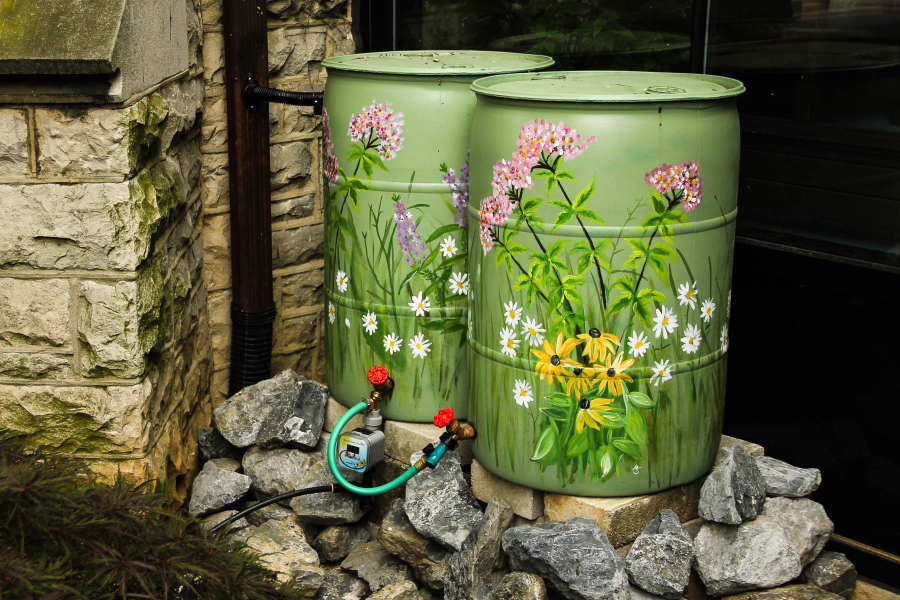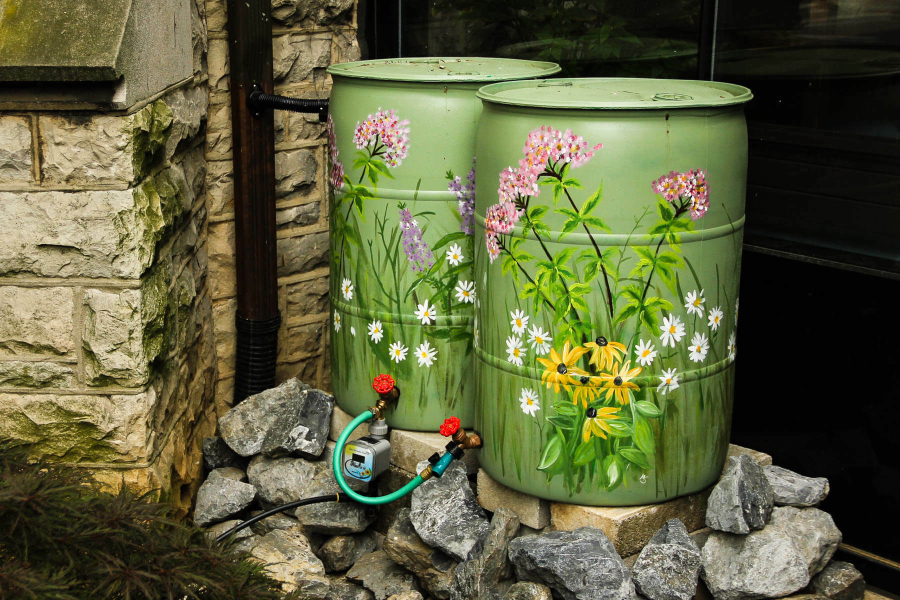How to Build a Rain Barrel
Rain barrels collect and store rainwater that runs out of a downspout or off of a roof, keeping runoff out of our rivers and streams. While unsafe for drinking, this water can be used to water plants or wash cars.

Building a rain barrel is one of the best things you can do to protect the Chesapeake Bay from your home.
A rain barrel is a system that collects and stores a portion of the rainwater that runs out of a downspout or off of a roof, keeping this runoff out of our rivers and streams. While this water is unsafe for drinking, it can be used to water plants and wash your car. On average, rain barrel owners can save about 1,300 gallons of water each summer, reducing water use charges on their utility bills.
Building a rain barrel for your home is not a quick process and we don’t recommend it for people with minimal construction experience. Keep in mind that a number of hardware stores, garden centers and local governments offer ready-made rain barrels to customers who would prefer to purchase a barrel instead of building their own.
Project Time Estimation
Constructing a rain barrel alone can take up to 20 hours.
Supplies
-
Drill
-
Two-inch hole saw for overflow pipe
-
One-inch spade bit for spigot
-
Heavy duty scissors or utility knife for cutting screen
-
Adjustable wrench
-
Safety glasses
-
Hacksaw
-
Tape measure
-
Screwdriver or nut driver
-
Pliers or crimpers
Materials
-
One 55 to 90 gallon food grade plastic barrel
-
Basket for catching debris
-
Enough window screen mesh to cover the barrel opening
-
Hose spigot with ¾ inch threaded inlet and ¾ inch male hose end
-
Two ¾ inch galvanized locknuts to secure spigot from the inside of the barrel
-
Overflow 90-degree pipe elbow
-
Garden hose to serve as overflow pipe
-
Four 1-inch (opening) washers
-
Teflon tape
-
Silicon adhesive or outdoor caulking
-
Two 8” x 8” x 12” concrete or wooden blocks
-
Flexible downspout elbow to route the downspout to the barrel
-
Clincher strap to attach downspout and barrel to house
-
¼” #6 metal screws for downspout
-
3/4" screws for clincher strap
-
2” overflow pipe fittings
Safety
Make sure the location you have chosen for your rain barrel has a flat surface and is in an area where the barrel can be secured. A full 55-gallon barrel can weigh up to 400 pounds when full, and is a dangerous tipping hazard if not secured properly.
Process Overview
-
Construct your debris basket
-
Cut a hole in your barrel
-
Create an outlet for the water
-
Attach an overflow pipe
-
Raise rain barrel
-
Attach to downspout
-
Maintenance
1. Build your debris basket
Acquire a small basket, with a circumference that is about a third of the barrel, that can be used to catch debris. Drill a mesh screen into the bottom of the basket to catch debris and keep mosquitoes from entering the barrel. This bucket will collect water from the downspout.
2. Cut a hole in your barrel and inset the bucket
Use the heavy duty scissors to cut a whole in the top of your barrel that is big enough for the debris bucket to fit it. Inset the bucket and make sure it is securely positioned.
3. Create an outlet for the water
When the rain barrel is full of water, you’ll need an outlet to drain in. In this step, create an outlet for the collected water by drilling a hole near the bottom of the barrel and attaching the hose spigot. Secure the spigot with two washers on both sides of the barrel and a nut on the inside. Use Teflon tape and/or silicone caulking to ensure a tight seal.
4. Attach an overflow pipe
Use the hole saw to drill a hole that is at least 2 inches in diameter near the top of the barrel; this is where the overflow pipe will go. If the overflow pipe elbow fits securely, no further action is necessary. If it doesn’t, secure it with washers on both sides of the barrel and a nut on the inside of the barrel. Use Teflon tape and/or silicon caulking around the opening to ensure a tight seal.
5. Raise rain barrel
Use concrete or wooden blocks to create a raised, stable and level base for the barrel to rest on. Note: It is a good idea to test the stability of this base by filling your rain barrel with water before attaching it to the house or building.
6. Attach to downspout
Use the hacksaw to cut the home or building’s existing downspout so that the downspout elbow can be attached. Once the downspout elbow is attached, it should sit just above the top of the barrel. Attach the elbow to the downspout with a screw. Place the barrel beneath the downspout, making sure to align the opening of the downspout elbow with the debris bucket where the water enters. Attach the barrel to the house or building using a clincher strap. Cut and attach the overflow pipe to the overflow elbow (installed in step three) and direct the pipe to an appropriate overflow discharge location, such as a lawn or garden bed.
7. Maintenance
Once you have installed your rain barrel, its maintenance is simple. Check it periodically for leaks, cracks, clogging and rips in the screen. In the winter, drain the water out of your rain barrel and turn it upside down. Use the flexible downspout elbow to redirect your downspout back to its original location until the spring arrives and the threat of freezing is gone.

